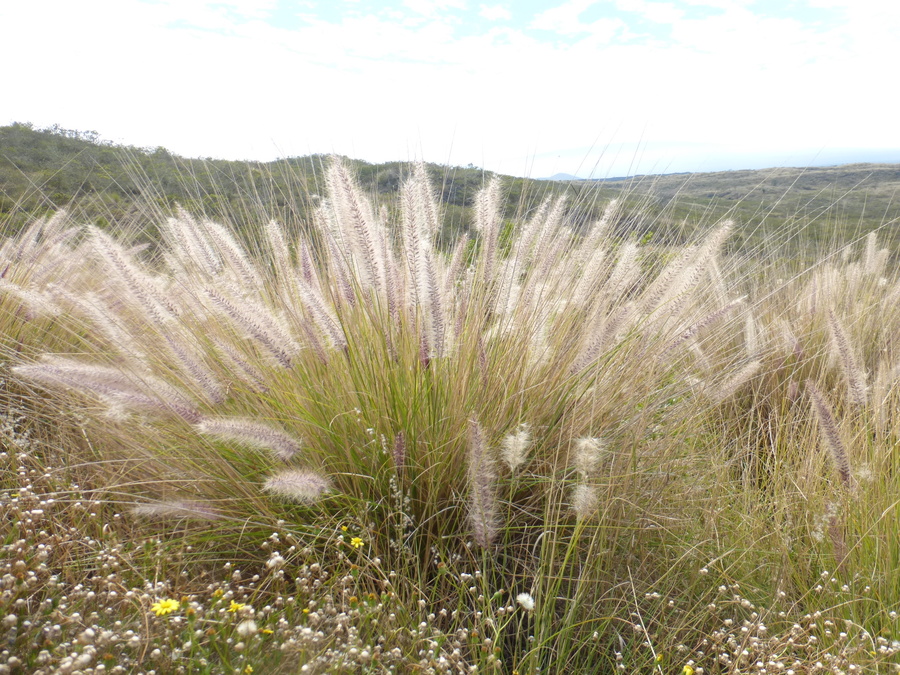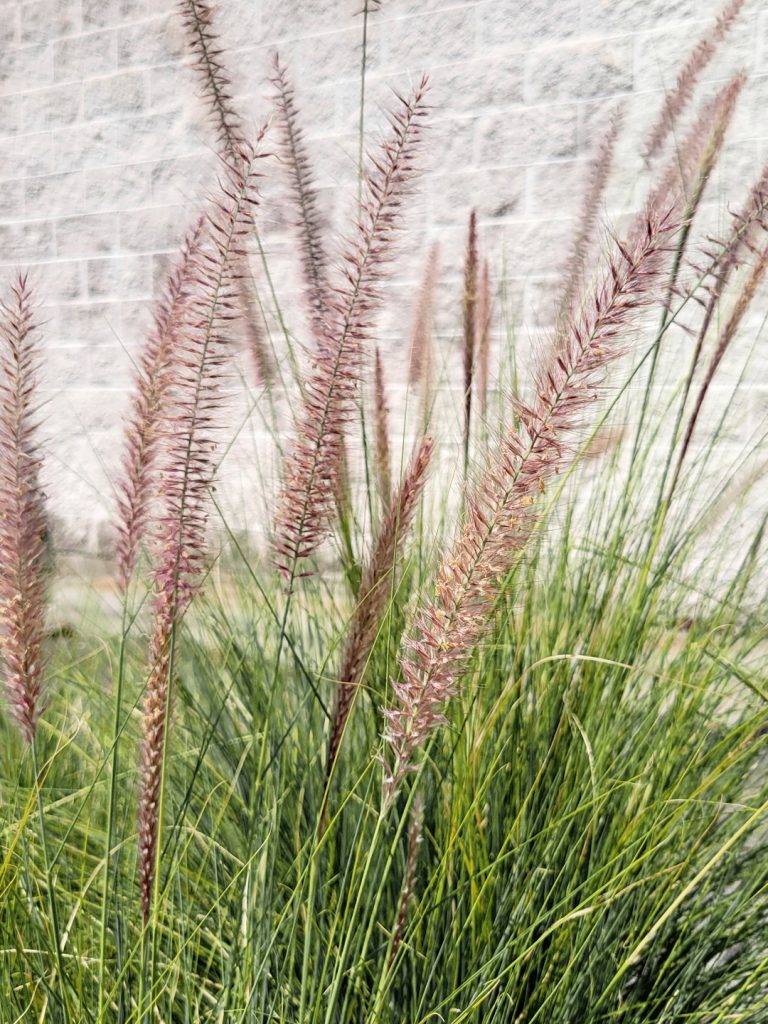
FAMILY
Poaceae, the grass family
NATIVE RANGE
Arid, coastal areas in Northern Africa
INTRODUCED RANGE
The western U.S., Hawaii, southern Florida, Australia, South Africa, southern Spain, and several Mediterranean islands
Important Environmental Factors

Low annual rainfall (<500 millimeters per year)

High levels of paved or compacted ground

Low tree canopy cover
Species Ecology
Originally introduced to California as an ornamental plant, fountain grass can be easily identified by its fluffy, cream or reddish-colored flowers when it is in bloom. It is a perennial bunch grass that grows in clumps and can reach about 1-meter high. Fountain grass is well-adapted to drought conditions. Individuals can be found growing in small crevices in concrete, sidewalks, and lawns, or blanketing rocky and disturbed south-facing slopes.
Impact in California
This drought tolerant bunch grass is fast growing and has no natural pests or diseases to control its range in California. Dense mats can be observed under power lines in the San Gabriel Mountains or on the south-facing slopes of the Hollywood Hills. Its seeds are easily dispersed by wind, animals, people, and/or automobiles, allowing it to colonize new areas, where it may outcompete native plants. It also continues to be intentionally planted in landscapes, from which it can spread to neighboring habitats [1]. The full impact of fountain grass in California is still being investigated, but in Hawaii, where it is also invasive, it has been shown to increase fire frequency and extent—which further facilitates its invasion [2].
Management
Preventing the spread of fountain grass is key to management, as once it establishes, the plants (and the seed bank in the soil) are almost impossible to remove. Avoid planting invasive fountain grass in landscapes. It is still sold in plant nurseries in Los Angeles, but there are other non-invasive varieties that provide a similar aesthetic. Removing the blooming flower stalks can help to prevent seed dispersal. For the entire plant, manual removal or herbicide applications are the most successful methods of control. They are especially important to implement near natural areas, newly burned areas, or areas with a high fire hazard. Efforts to control and monitor the spread of fountain grass likely require adequate funding for and collaboration among federal, state, and non-profit organizations.

Data source:
Species records provided by iNaturalist and Calflora
References
- African Fountain Grass, Pennisetum setaceum. UC Riverside Center for Invasive Species Research.
- D’Antonio and Vitousek (1992) in Annual Review of Ecology and Systematics 23.